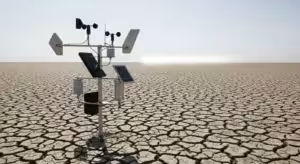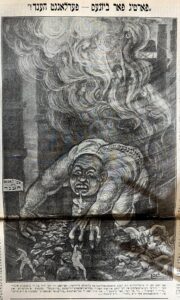During America’s Great Depression, the nation’s economic collapse coincided with a drought in its heartlands, the semi-arid plains of the Midwest. As the rain failed, the ‘black blizzards’ or ‘dusters’ started, blinding black or red dirt that swept through 19 states: the panhandles of Texas and Oklahoma, Kansas, Colorado, Montana and New Mexico, and the High Plains of Dakota. The drought lasted for the best part of a decade and with each passing year the dusters increased in frequency and magnitude.
The ‘Dirty Thirties’ began in 1931 – great black clouds darkened the sky sending flying dust into every nook and cranny. In 1932 there were 14 dusters; the following year there were 38; by 1934, 40 million hectares (100 million acres) of arable land had lost its topsoil. With grim determination the farmers carried on ploughing their fields, sowing their wheat and waiting for rain, as an epidemic of ‘dust pneumonia’ raged and people and animals choked on the dust and died of suffocation.
The storms reached their height on April 14 1935 – Black Sunday. After weeks of storms, it was a clear day when suddenly a great cloud came rolling in from Oklahoma, enveloping everything in its path and blacking out all trace of daylight. Travelling at 100 kph (60mph) the cloud carried the dust northwards as far as Canada and east to the Atlantic seaboard.
Black Sunday was the tipping point for hundreds of thousands of smallholders: giving up the unequal struggle, they abandoned their land to roam the roads in search of work and food, joining the ranks of the millions of unemployed created by the Depression. But Black Sunday’s dust storm finally made the government take action; it passed the Soil Conservation Act and implemented training programs on sound farming practices. And finally, in 1938, it started to rain.
When was the Dust Bowl Disaster: 1931-1938
Where was the Dust Bowl Disaster: Great Plains, USA
What was the Dust Bowl Disaster death toll: It is impossible to estimate how many people died from dust-associated disease; 400,000 dispossessed souls left the dust bowl, in terms of human loss and suffering, America has known nothing on the scale of the ‘Dirty Thirties’, before or since.
You should know: For years the grasslands of the Great Plains had been farmed too greedily. The usual methods of ensuring healthy soil – crop rotation and leaving exhausted land to lie fallow – had not been practiced. And after years of over-grazing and deep ploughing, the natural prairie grasses that trapped moisture and kept the soil intact had been uprooted, leaving the abused topsoil vulnerable to erosion; as drought turned it to dust, the parched earth simply blew away leaving mile upon mile of barren land.






















